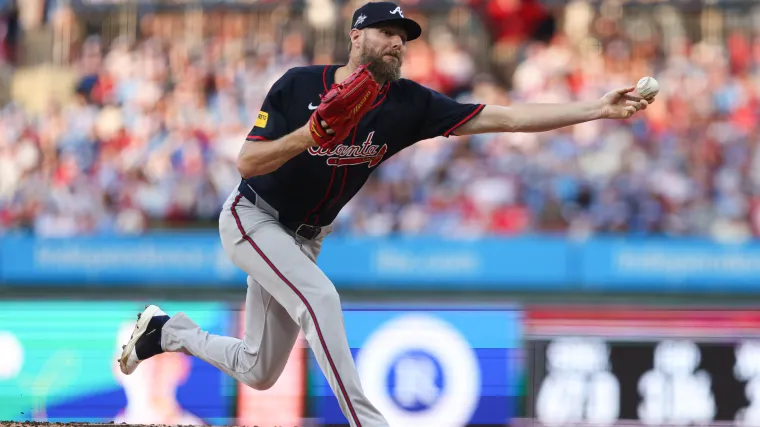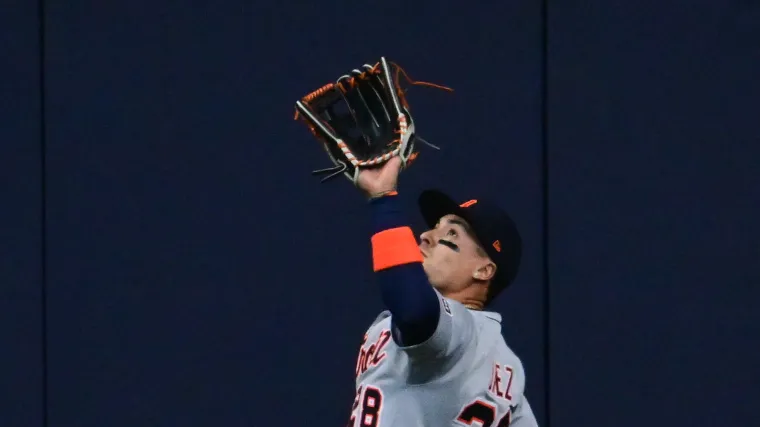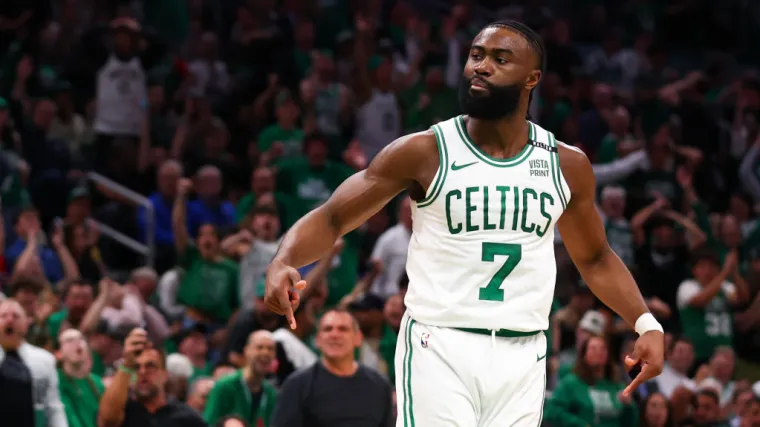If one were to pose the question about which person who never made a basket that mattered was the most influential on the sport of basketball – not counting the person who invented it, James Naismith – Sonny Vaccaro at least would be one of the candidates.
So much of what is common now in the sport either was conceived or advanced by Vaccaro: the shoe culture, summer tournaments for top high school players, all-star games for elite high school talent and, now, the NIL contagion in college hoops.
Vaccaro played college football at Youngstown State but wound up earning his living in this game, along the way developing a sense for talent many pro scouts would envy. Two years ago, Ben Affleck directed a movie, “Air”, that depicted Vaccaro’s immense role in Nike signing Michael Jordan to an endorsement deal in 1984 and launching the Air Jordan empire.
Follow The Sporting News on WhatsApp
Now, Vaccaro has released a book, “Legends and Soles”, that tells that story and many more from his perspective. On the page, it looks and sounds a lot more like Sonny than Matt Damon ever could.
Vaccaro had an enormous impact on my career, in part because we happened to grow up in the same region. As a Western Pennsylvania native, Vaccaro joined with Pat DiCesare – who would become one of the nation’s most successful rock concert promoters – to introduce to Pittsburgh what became the Dapper Dan Roundball Classic. A first of its kind high school all-star game, the Roundball preceded the Capital Classic in Washington and the McDonald’s All-American Game.
I attended my first as a high school sophomore, then every one for the next 16 years. Before any became college or pro stars, I got to see Dominique Wilkins, Patrick Ewing, Alonzo Mourning and Shawn Kemp shine in the Roundball.
In the summer of 1991, I spent a week of vacation time at Vaccaro’s next concept: the Academic Betterment and Career Development Camp for elite basketball prospects. Another person had conceived the idea for a camp that included academic instruction as well as basketball, but Vaccaro got it sponsored, changed the name and soon began gathering the nation’s top talent – free of charge – for the ABCD Camp in Indianapolis.
MORE: SN’s latest NBA Mock Draft
Many of the players Vaccaro gathered there for my first visit would define the next few years of college basketball: Rasheed Wallace, Donta Bright, Corliss Williamson, Tony Delk. When the ABCD Camp moved to New Jersey, I attended every year – and got my first look at a player named LeBron James.
Vaccaro has been a valuable resource in my coverage of college athletics throughout my career, but he also has been a controversial figure, at times, largely because he disputed the convention that college athletes should be uncompensated beyond tuition, room, board, books and fees. He became an integral figure in the court decision that changed college sports forever: what is known as the O’Bannon case.
“Legends and Soles”, written with journalist Armen Keteyian, tells the stories behind all of this, Vaccaro’s stunning departure from Nike and the reason behind the fracture of his relationship with former college coach George Raveling, who’d been the best man at Vaccaro’s wedding to his wife, Pam.
He spoke with me extensively about what’s in the book – and also what didn’t make it into those pages. (The interview was edited for clarity):
SN: Sonny, as I was reading the early chapters, I turned to my wife and said, “If I were writing my memoir, I think I’d have more in there on the Roundball Classic than Sonny did, and he came up with the event.” Why wasn’t there more?
Vaccaro: We were on a word budget. In fact, there were seven or eight chapters we didn’t use, that we could have used.
SN: So what might you have mentioned?
Vaccaro: One of the ones we always talked about was when Eugene Banks gave Sam Clancy the trophy for the MVP at the game in 1977. An All-Star giving up that trophy – I get asked, “What made him do that?” There were 17,000 people there. No one does that. And no one ever did it since that. It spoke well for both of them.
SN: I’ve got another question about that night, and it’s bugged me for almost 50 years. Magic Johnson was in the game program, was supposed to play, but he didn’t show. What happened?
Vaccaro: Well, I got bufooned. He was invited. He was coming. And someone invited his parents on a tour to Europe. They were going to play in a game in Europe. The next year, Earvin came and spoke to the team; he was at the Roundball the next year. We remained friends through the years. But that was the biggest disappointment to me on someone not showing up, because it was Magic. We lost a lot of guys we would have liked to have because of the NCAA’s two-game restriction.

SN: You talked in great detail in the book about the courtship of LeBron James relative to which shoe he would endorse; you were with adidas at the time, and he ultimately signed with Nike. But you didn’t talk a lot about having him at ABCD, and what a pivotal experience it was for him to be seen in that environment – in particular his meeting against New York star Lenny Cooke.
Vaccaro: He did for ABCD, at that time, what Calvin Murphy did for the Roundball. In sports, you have that sort of individual that you don’t forget. And LeBron didn’t play the next summer because he was injured, so that meant he only played at ABCD. That was the turning point of making ABCD the greatest camp that was ever done, because we were now getting the best players.
People had heard about LeBron but still didn’t know how good he was, but that week, those four days and the Lenny Cooke thing – because New York had created him, we basically sold out that whole night. And LeBron making the game-winning shot with no time on the clock – everything in that night can now be visualized by the people who saw the game.
SN: It was interesting that you waited to the closing chapters to discuss your split with George Raveling. When he joined Nike after you had gone to work for adidas, that impacted a lot of things that came afterward. Why not present it chronologically, like the rest of the book?
Vaccaro: Because if I would have started with George Raveling, I would have taken away the beauty of the book, in my life. I had to let that be the ending. I couldn’t put that somewhere else.
That question is asked by a few different generations now: How the hell did that happen? Your best friend? We almost didn’t do it; I told Pam when we were putting the book together: This one’s for me. I have to tell the public.
I had to say that, because the guy was my best man. He stayed at my home. And all of a sudden … I had to let the readers understand … I’ll never get over George Raveling.
SN: In the late 2000s, the NCAA held a meeting to gather many of basketball’s most important figures to discuss changes happening in the sport, particularly at the youth levels. You were not among those invited. Did that exclusion impact your criticism of the NCAA’s amateurism practices – and your work behind the scenes on the O’Bannon v. NCAA case? Would you have worked with them if they’d invited you?
Vaccaro: I would have worked with them if they invited me. They never did. There’s a great story there. Pam and I were guests of David Stern for about 10 or 15 years … every summer, he’d invite me in to spend an hour or an hour and a half. We were having this meeting that year, and as we’re wrapping up, David says to me very casually, “Well, I’ll see you in Chicago next month.”
I said, “What’s in Chicago?”
He said, “Well, they’re having a meeting, bringing in everybody to talk about all the problems in youth basketball.”
I never would have known. I wasn’t invited. I was the reason they were having the meeting because we were so good at what we did with the camps and that. I did the Roundball, the ABCD, the Big Time Tournament – how could they leave me out? I knew that was the end of me there.
Now, when you look at that meeting, that meeting gave birth to “iHoops”. That was going to be the answer to “curing” it.
Nothing good ever happened out of it. What they tried to do was a failure … and the failure led to where we are today. If they would have sat down – forget me, with personal ego or vanity, which isn’t there – maybe we would have come to a point where maybe the O’Bannon case wouldn’t have had to exist.
Now they’ve got kids making money – and they’re bitching about what they allowed to happen.
MORE: Latest SN Big Board for 2025 NBA prospects
SN: One thing you and I have always disagreed about is the NBA Draft age limit. You made quite obvious in the book that you did not like it. I’m wondering if now that athletes are being paid at the NCAA level, whether that’s changed your feelings about the age limit.
Vaccaro: I don’t think of the age limit anymore, because of that reason. It doesn’t have anything to do with it, because 15-year-olds can sign for NIL, also. I’ve watched the whole evolution of this thing. It’s something that could have been settled. I never imagined NIL would happen like this. That was never my idea. It was incomprehensible to think what was going to be happening.
But it was a mistake, this ignorance and horrible running of the NCAA.
It’s ridiculous what’s happening these days … Now we’ve got a football coach and the President of the United States are going to figure out how the hell to do this? It’s pathetic, but it’s only pathetic because the NCAA never cared about the athlete.
TSN: In the book, you did address the mechanics of how you were let go by Nike. In the end, does it just come down to you getting too much credit for the great success Air Jordan engendered at Nike? Do you think that’s why it ended as it did?
Vaccaro: The answer is quite obvious: I was bigger than Nike. Because the people – and especially the kids – thought I was Mr. Nike. I can’t possibly say what happened in their minds. How do you rectify the fact Phil Knight writes his own legacy book, with one of the great ghostwriters in America (J.R. Moehringer) … and I’m eliminated in his memoir. That’s an impossibility. And I was omitted in “The Last Dance”, which was an impossibility. They taped me for three hours!
If you ever watch “The Last Dance”, they had to put me in because it was Michael and me walking into Nike headquarters. have the same shirt on, I think, that I have in the movie.
I wasn’t bigger than Nike. But I think that they perceived I was bigger than Nike. I never went around saying all that. I gave credit to Nike.
Was I shocked? Yeah. Inconceivable. It hurts … to this day.




